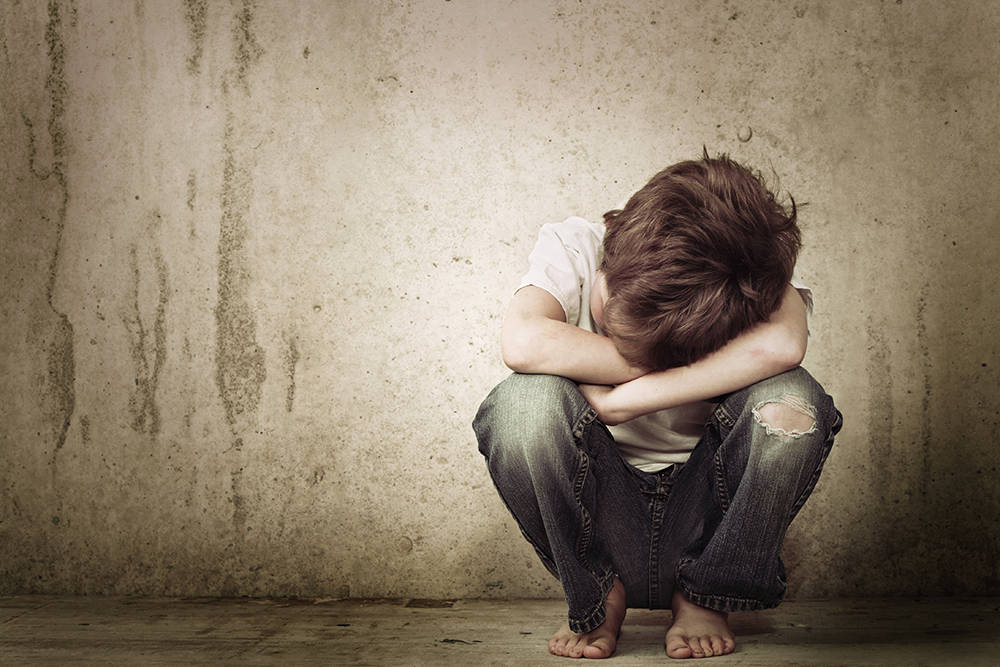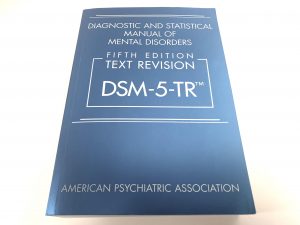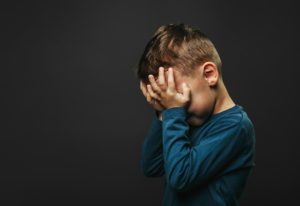$280 billion in mental health funding hasn’t ended violent restraint use and patient deaths. And in schools, despite mental health screening and treatment, the culture of violence continues.
By Jan Eastgate
President CCHR International
February 10, 2023
The federal government spent around $280 billion in mental health funding in 2020, about a quarter of which came from the U.S. Medicaid program.[1] In 2013, mental health was already the costliest healthcare sector in the country with an estimated $201 million spent on it—more than that expended on treating heart conditions and cancer, according to an analysis published in Health Affairs Journal.[2] Yet, despite this investment, America’s mental health system is in shambles.
Conditions and outcomes have only worsened, for which psychiatrists demand more funds.
Time and time again, it is reported that the U.S. is experiencing a profound crisis when it comes to mental health care and those with psychiatric disorders have shorter life expectancies than the general population.[3] However, studies show people are more likely to die from psychiatric hospitalization and treatment. Spending time in a psychiatric hospital—where psychotropic drugs that are linked to suicide can be forced on individuals against their will—increases the risk of self-inflicted death by 44 times.[4]
While the average person’s heart beats 2.5 billion times in a lifetime, in psychiatric facilities, children’s heartbeats have been cut short to 434 million times because, at age 7, they were restrained and killed.
With 6.1 million American children up to the age of 17 prescribed psychotropic drugs linked to acts of violence and school shootings, we see a culture of violent behavior in schools. From 1992 to 2017, there were at least 37 active shooter incidents in schools and 15 such incidents at post-secondary institutions.[5]
Today, children are subjected to psychiatric-style “restraints” in schools—pinned to the ground by staff or bound by mechanical devices such as straps or handcuffs. A CT Insider investigation in 2022 reported Federal data showing restraints and seclusions happen 2,300 times per school day, on average, across the nation to upward of 102,000 students each academic year. Some are preschoolers as young as 3 and 4 years old.
Roughly 80% of students subjected to restraint and seclusion were students with disabilities, though they account for only 13% of the student population. In 2017-18, about 28% of students subjected to physical restraint and 23% of students subjected to seclusion were Black, yet Black students accounted for only 15% of the student population nationwide that year.[6]
A Hearst Newspapers review found at least 85 children, teenagers, and young adults 21 and younger have died after being restrained or kept in seclusion over the past three decades in public and private schools, juvenile justice centers, residential facilities, or other settings that specialize in serving people with disabilities. However, 39 states tracked only some data (not all) on the use of restraint and seclusion and 10 states provided no tracking.[7] As such, deaths resulting from restraint and seclusion practices may be grossly underreported.
In a compelling investigative article, CT Insider reported that between 2018-19 and 2020-21, Nevada recorded 122 times when educators in public schools performed physical restraints in violation of state law, 24 illegal mechanical restraints, and 66 times when forbidden “aversive” interventions were used. Those interventions included corporal punishment, electric shocks, the use of noxious odors, food deprivation, or other punitive behavioral modification methods.[8]
But taxpayers’ money keeps being poured into the psychiatric/“mental health” industry—with very little accountability if any. Medicaid, jointly with the Children’s Health Insurance Program (CHIP), provides basic health insurance to over 72.5 million Americans with a low income. Although accounting for approximately 20% of the population, patients said to have “behavioral health” conditions account for 48% of Medicaid spending. It is estimated that almost a third of low-income Medicaid beneficiaries have been labeled with “depression,” representing twice the rate of the nation.[9]
That Medicaid recipients, who are poor, are a target for psychotropic drugs and for psychiatric hospitalization, smacks of a throwback to eugenics (meaning “good stock”), the “social program” developed by British psychologists in the late 1800s that was aimed at preventing “less desirable” humans from procreating, which especially targeted the poor and the so-called “unproductive.”
In 1930, Nazi psychiatrist Ernst Rüdin, the mastermind of Adolf Hitler’s racial hygiene policy during WWII, addressed the First International Congress for Mental Hygiene which was held in Washington, D.C. The U.S. Mental Health Association—today called Mental Health America—hosted the Congress. Rüdin defined to a captivated audience a list of “eugenics defects,” which included “attentional deficits” at the top of the list. These are now commonly known as attention deficit disorder (ADD) or attention deficit hyperactivity disorder (ADHD). As part of the eugenics movement, psychiatrists had parents, teachers, and “support groups” searching for children with these deficits.[10]
- Today, universal mental health screening in U.S. schools collects information about children, identifying those as “disordered.” School-based screening for the early identification of children “at risk” for ADHD broadly exists.[11]
- In the 2019–2020 school year, 55% of public schools (or 45,600 schools) reported providing mental health assessments to evaluate students and 42% (or 35,200 schools) reported providing treatment to students for mental health disorders. Among schools providing treatment services, 62% provided treatment services both at school and outside of school.[12]
- Mental Health America provides mental health screening questionnaires for schools claiming their use is “one of the best ways to catch mental health problems when and where they are likeliest to arise.” They claim—without any scientific evidence—that 50% of individuals who struggle with a mental health condition will show symptoms during their adolescent years.” A Counseling Today article claimed—also without scientific proof—that approximately 80% of chronic mental health disorders begin in childhood. These statistics are conjecture.
- Leading international psychopharmacologist David Healy says: “So if ever more money is going into children’s mental health, why are things not getting better. It’s because the money is going into screening programs to pick up children who may be off-color….” With the use of antidepressants on some of these children, he said, “the rate of suicidal events in children goes up.” In 2018, he highlighted that “every trial of antidepressants in children has produced an excess of suicidal acts…. Antidepressants now appear to be the most commonly used drugs by teenage girls after oral contraceptives,” and “Many of these teenagers will be on drugs for life because of this.”[13]
- Healy further stated that in “every single one of these [antidepressant] trials it has produced more harms than benefits in the sense that it has made children become suicidal who wouldn’t have become suicidal if they hadn’t been put on these drugs.” Further, “We have a situation where if you are following the evidence no-one should be using these drugs. At the same time, in teenagers, these drugs have become the most commonly used drugs.”[14]
- The altruistic-sounding but deceptive “Social emotional learning” (SEL) permeates public education policy and is taught in schools in pre-K and K12 curricula to cultivate in children the attitudes, feelings, and behaviors necessary for academic achievements, such as empathy and regulation of emotions.[15] But that is questionable. SEL’s roots lie in the theories of the early 20th century U.S. psychologist John Dewey, who advocated the idea that schools should educate the “whole child”—socially and emotionally. Dewey adhered to Social Darwinism, the biological concept of “survival of the fittest,” in which eugenics was also rooted. Charles Darwin’s (1809-1882) cousin was the father of eugenics, British psychologist Francis Galton (1822-1911).
- Some 30 states and the District of Columbia already have statutes and regulations that encourage or require SEL or “character education” programs in schools. About 15 states even mandate the inclusion of such programs in schools. One Oklahoma State Senator calls it an effort to “psychologically manipulate children and surveil Oklahoma families under the guise of addressing trauma.”[16]
- Despite so-called “character building” and SEL to improve academic and behavioral outcomes, according to the National Center for Education Statistics (NCES), there were 1,193 fatal injuries in U.S. elementary and secondary schools between the 1992–93 school year and the 2017–18 school year. In 2015–16, there were 38 school-associated violent deaths, representing about 10 per 1,000 students. The most recent data available shows that during the 2019–20 school year, there were about 939,000 violent incidents (including sexual assaults, robbery, and physical attacks with or without a weapon) in U.S. public schools.[17]
- In April 2022, the U.S. Preventive Services Task Force, an independent panel of national experts in “disease prevention,” recommended that every child age 8 and older be screened for anxiety. This is in addition to all adolescents 12 and older being screened for depression. The screening is based on subjective questions that can lead to false positives in children answering them—meaning they are misdiagnosed as “mentally ill,” which can result in a referral for psychiatric treatment.
- One questionnaire asks how often over the past two weeks have you been unable to control worrying. How often have you felt nervous? Anxious? On edge? Another survey is the 41-question SCARED (Screen for Child Anxiety Related Disorders). In essence, such questionnaires instill in the minds of youths that there is something “wrong” with their feelings, where there may not be.
- The questions are not based on any scientifically proven disease. SCARED cites the American Psychiatric Association’s Diagnostic and Statistical Manual of Mental Disorders (DSM)—one of the most disputed psychiatric texts, especially due to its unreliability.
- In 2019, a study published in Psychiatry Research concluded that psychiatric diagnoses are scientifically worthless as tools to identify discrete mental health disorders. The study, led by researchers from the University of Liverpool, involved a detailed analysis of five key chapters of the latest edition of the DSM, on “schizophrenia”, “bipolar disorder”, “depressive disorders”, “anxiety disorders” and “trauma-related disorders”. Lead researcher Dr. Kate Allsopp said: “Although diagnostic labels create the illusion of an explanation they are scientifically meaningless and can create stigma and prejudice.”
- Professor Peter Kinderman, University of Liverpool, said: “This study provides yet more evidence that the biomedical diagnostic approach in psychiatry is not fit for purpose. Diagnoses frequently and uncritically reported as ‘real illnesses’ are in fact made on the basis of internally inconsistent, confused and contradictory patterns of largely arbitrary criteria. The diagnostic system wrongly assumes that all distress results from disorder, and relies heavily on subjective judgments about what is normal.”[18]
- One of the developers of SCARED serves as a consultant for the pharmaceutical company Schering Plough. He has participated in forums sponsored by other drug companies—Forest, Shire, Jazz Pharmaceuticals, and Solvay. One’s psychopharmaceutical conflicts of interest should be taken into consideration as being a factor in the development of the questionnaire.
- When schools refer students to “treatment,” over 96% of psychiatric hospitals, and general hospitals with separate psychiatric units, administer psychotropic drugs.[19] In 2020, in mental health facilities providing treatment, 38.3% treated those ages 5 or younger, 56.9% were for children 6-12, and 64.9% for adolescents ages 13-17.[20]
- Texas Senate Bill 112 mandates mental health education in high school. Recent health “instructional” materials are loaded with “self-assessments” that prompt users to seek professional help. Teenagers are told: “When seeking help, it is a good idea to talk to an adult you trust, such as a teacher, nurse, or other relative. This person may be able to support you in other ways, such as helping you find a qualified therapist or driving you to or from appointments.”[21] [Emphasis added]
- At such “appointments,” teens may be prescribed psychotropic drugs that affect behavior, mood, thoughts, or perceptions. The drugs are regularly prescribed to children at a time when their developing brains and bodies are acutely sensitive. Antidepressants may be associated with reductions in growth and bone mineral density after long-term use. Compared to adults, children are at increased risk for cardiometabolic side effects which are associated with second-generation antipsychotics, including the development of type 2 diabetes.[22]
Children are a lucrative business in mental health. They don’t have the right to consent and their complaints about abuse can be easily ignored. Parents are often misled about the effectiveness of the treatment they are told their children “need.” The report “The Kids Are Not Alright: How Private Equity Profits Off of Behavioral Health Services for Vulnerable and At-Risk Youth,” published in February 2022, found for-profit behavioral facilities have become a gravy train for investors in what has become a $23 billion-a-year “child abuse” in the mental health industry.[23]
Children are being stigmatized with psychiatric labels and put in harm’s way with screening and referrals through our schools for mental health “treatment.”
However, this is not limited to children; the entire mental health industry is feeding at what the late Dr. Thomas Dorman, internist and member of the Royal College of Physicians of the UK, called the “public trough”: “In short, the whole business of creating psychiatric categories of ‘disease,’ formalizing them with consensus, and subsequently ascribing diagnostic codes to them, which in turn leads to their use for insurance billing, is nothing but an extended racket furnishing psychiatry a pseudo-scientific aura. The perpetrators are, of course, feeding at the public trough.”[24]
A $280 billion public trough, for which the return is not only poor but also harmful.

[1]“Reducing the Economic Burden of Unmet Mental Health Needs,” White House statement, 31 May 2022, https://www.whitehouse.gov/cea/written-materials/2022/05/31/reducing-the-economic-burden-of-unmet-mental-health-needs/
[2] https://www.huffpost.com/entry/highest-health-costs-mental_n_574302b8e4b045cc9a716371
[3] U.S. Senate Committee on Finance, “Mental Health Care in the United States The Case for Federal Action, Mar. 2022, https://www.finance.senate.gov/imo/media/doc/SFC%20Mental%20Health%20Report%20March%202022.pdf
[4] https://www.cchrint.org/2022/06/03/suicide-attempts-increasing-in-children-including-28-in-6-to-9-year-olds-is-preventable/; Matthew M. Large, Christopher J. Ryan, “Disturbing findings about the risk of suicide and psychiatric hospitals,” Soc. Psychiatry Psychiatr Epidemiology (2014), 49: 1353-1355, https://link.springer.com/article/10.1007/s00127-014-0912-2
[5] https://study.com/learn/lesson/school-violence-statistics-causes.html
[6] Emilie Munson, Matt Rocheleau, Alex Putterman, Libby Seline, Alexandra Kanik, “When Schools Use Force, A National Investigation,” CT Insider, 27 Jan. 2022, https://www.ctinsider.com/news/article/Controversial-and-often-used-these-little-known-17474949.php
[7] Ibid.
[8] Ibid.
[9] Domonic Pilon, et al., “Medicaid spending burden among beneficiaries with treatment-resistant depression,” Journal of Comparative Effective Research, Vol 8, No. 6, published online 8 Feb. 2019 in Future Medicine, https://www.futuremedicine.com/doi/10.2217/cer-2018-0140
[10] https://www.cchr.org/documentaries/age-of-fear/creating-the-holocaust.html
[11] https://www.ncbi.nlm.nih.gov/pmc/articles/PMC5019564/
[12] https://nces.ed.gov/programs/coe/indicator/a23/school-mental-health-services
[13] https://davidhealy.org/the-greatest-failure-in-what-used-to-be-called-medicine/
[14] “Teenage antidepressants ‘doing more harm than good,’” BBC News, 5 Feb. 2018, https://www.bbc.com/news/uk-scotland-42917452
[15] https://www.frc.org/events/programming-our-children-the-social-engineering-agenda-of-social-emotional-learning/
[16] https://kfor.com/news/local/senator-proposes-bill-that-would-prohibit-social-emotional-learning-in-oklahoma-schools/
[17] https://study.com/learn/lesson/school-violence-statistics-causes.html
[18] “Study finds psychiatric diagnosis to be ‘scientifically meaningless,’” Neuroscience, 8 Jul. 2019, https://neurosciencenews.com/meaningless-psychiatric-diagnosis-14434/
[19] National Mental Health Services Survey (N-MHSS): 2018 Data on Mental Health Treatment Facilities, DEPARTMENT OF HEALTH AND HUMAN SERVICES Substance Abuse and Mental Health Services Administration, p. 1.
[20] https://www.statista.com/statistics/712850/mental-health-facilities-accepting-specific-age-groups-in-us/
[21] Lee Spiller, CCHR Texas Human Rights Report, “Who is Teaching Your Children About Mental Health? Who Benefits? – Part 1,” Jan. 2023
[22] Becky A. Briesacher, Ph.D., et al., “The Quality of Antipsychotic Drug Prescribing in Nursing Homes,” Arch Intern Med., 13 Jun. 2005;165(11):1280-1285, https://jamanetwork.com/journals/jamainternalmedicine/fullarticle/486595
[23] https://www.cchrint.org/2022/02/21/the-kids-are-not-alright-report-confirms-profit-is-put-before-troubled-teens-mental-health-safety/, https://www.breakingcodesilence.org/federal-legislation/; “The Kids Are Not Alright: How Private Equity Profits Off of Behavioral Health Services for Vulnerable and At-Risk Youth,” Private Equity Stakeholder Project, 17 Feb. 2022, https://pestakeholder.org/wp-content/uploads/2022/02/PESP_Youth_BH_Report_2022.pdf; https://www.breakingcodesilence.org/
[24] https://www.cchrint.org/psychiatric-disorders/psychiatristsphysicians-on-lack-of-any-medicalscientific-tests/#_edn48







